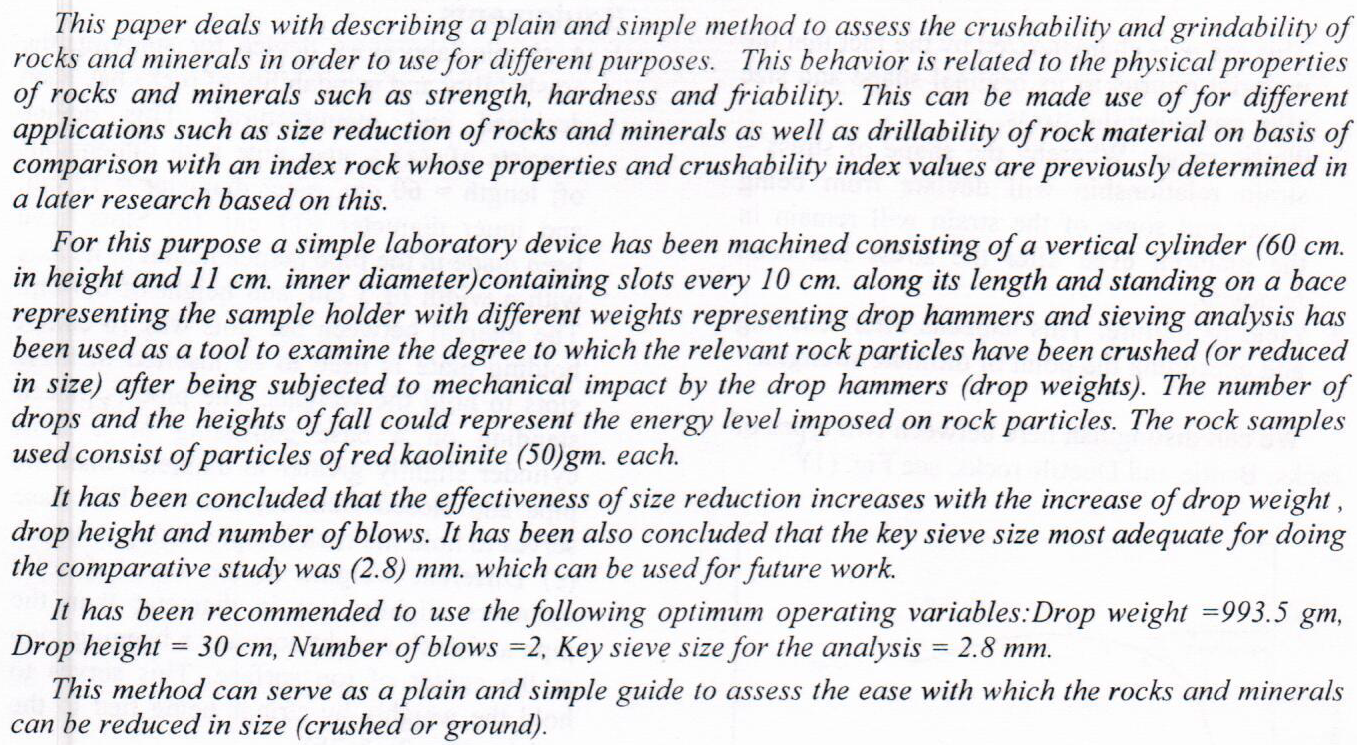
This study was conducted on the effect of the sedimentary source (the sediments coming from both the Iraqi-Iranian borderline and the Tigris river) on the optical and textural features, especially sphericity and roundness of feldspar minerals (potassium and plagioclase types) in soils of the southern part of the alluvial plain. Eight pedons were selected to represent the study area, five of them represented sediments coming from the borderline, which included pedons of (Badra, Taj Al-Din, Al-Shihabi, Jassan, and Galati), while two of them represent the sediments of the Tigris River (Essaouira, Al-Dabouni), the pedon of Ali Al-Gharbi was represented the mixing area of sediments of all the floods coming from the borderline and the sediments o
... Show More (2)
(2)
Abstract :In this study, amygdaline in Iraqi plant seeds was extracted and isolated from their seeds matrix using reflux procedure and subsequently identified and determined by high performance liquid chromatography (HPLC) on reversed phase column of LC-18 (150mm x 4.6mm, 5?m )with actonitrile :water ( 50 : 50 ) as mobile phase at flow rate of ( 0.5 mL/min ) and detection at wavelength of 215 nm.The experimental results indicated that the linearity of calibration is in the range of 1.0-30.0 mg L-1amygdaline with the correlation coefficient of 0.9949. The limit of detection (LOD) and limit of quantitation (LOQ) for amygdaline were of 0.88 and 2.93 mg L-1 in standard pure sample. The mean recovery percent is 97.34±0.58 at 95% confidence inte
... Show More (2)
(2)
The Cu(II) was found using a quick and uncomplicated procedure that involved reacting it with a freshly synthesized ligand to create an orange complex that had an absorbance peak of 481.5 nm in an acidic solution. The best conditions for the formation of the complex were studied from the concentration of the ligand, medium, the eff ect of the addition sequence, the eff ect of temperature, and the time of complex formation. The results obtained are scatter plot extending from 0.1–9 ppm and a linear range from 0.1–7 ppm. Relative standard deviation (RSD%) for n = 8 is less than 0.5, recovery % (R%) within acceptable values, correlation coeffi cient (r) equal 0.9986, coeffi cient of determination (r2) equal to 0.9973, and percentage capita
... Show More (5)
(5)
 (1)
(1)
Abstract  
... Show MoreGraphite nanoparticles were successfully synthesized using mixture of H2O2/NH4OH with three steps of oxidation. The process of oxidations were analysis by XRD and optics microscopic images which shows clear change in particle size of graphite after every steps of oxidation. The method depend on treatments the graphite with H2O2 in two steps than complete the last steps by reacting with H2O2/NH4OH with equal quantities. The process did not reduces the several sheets for graphite but dispersion the aggregates of multi-sheets carbon when removed the Van Der Waals forces through the oxidation process.
 (7)
(7)
 (2)
(2)
This study is conducted to verify the efficienecy of local Ninivite rock when used in the treatment of drinking water in plants operating currently in the country in order to develop the situation of these stations to cope with the increase in population. Also, this will limit the pollutian which are increasing in the country's rivers.
(Euphrates and Tigris). These rivers are the sources to feed all water treatment plants in the country. The idea is the develop or the modify these stations by replacing part of top layer of sand filters used in these stations with Ninivite rock to operate as filters composed of two medium. The efficiency of this rock is compared with other materials used successfully worldwide in this area, such a
... Show More (8)
(8)
 (8)
(8)
When the drawdown pressure amounts to a value below the dew point pressure, a minor droplet of condensate is shaped and accumulated in the close area of wellbore. As the accumulation happens, the saturation of the liquid will grow and a reduction in gas relative permeability will happen, therefore it will affect the productivity. Generally, condensate baking problem in gas wells is being deliberated and studied and numerous techniques have been suggested to solve the problem. The studying of condensate banking dynamics is essential to evaluate the productivity and behavior of the wells of the gas fields.
 (5)
(5)
 (3)
(3)
Erratum for Organic acid concentration thresholds for ageing of carbonate minerals: Implications for CO2 trapping/storage.
The present study was designed to evaluate the immunological status in a sample of Iraqi males with primary infertility and them age range18-55 years, who were attending the Centre of Infertility and in vitro Fertilization (Kamal Al-Samaraie Hospital, Baghdad) during the period December 2008 – April 2009. They were divided into three groups; 40 patients with anti-sperm antibodies (ASA), 20 patients with Asthenozoospermia (AST) and 20 patients with azoospermia (AZO). In adition to20 fertile males was as control group. The parameters of evaluations were standard seminal fluid analysis, anti-sperm antibodies and anti-mitochondrial antibodies in serum, Therefore, two types of samples were collected from each subject; seminal fluid and blood.
... Show More